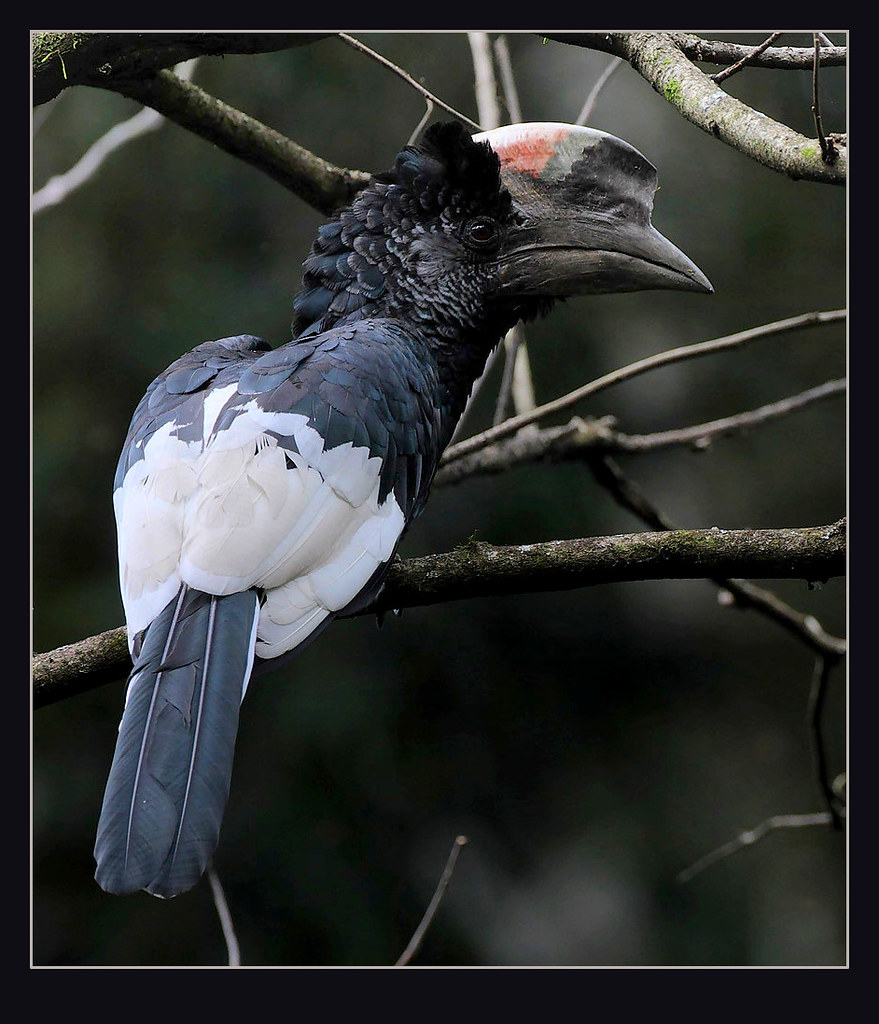It is a long black and white hornbill (approx 28 inch) with a large oversized blackish bill and a large casque on top and that is how the name defines it. The female hornbill is slightly larger than the male.
They are a very monogamous bird so you will find pairs nesting on suitable tree cavities.
Found mainly in wooded habitats in central and western Africa, ranging from west Kenya to Côte d'Ivoire with an isolated population in north Angola.
Like most hornbill species, their diet mainly consists of figs, fruit, insects and small animals found in trees.
The IUCN Red-List of Threatened Species accesses this bird as found commonly and widespread so have given them a Least Concern IUCN Conservation Status.
 |
| Male Black-and-white-casqued Hornbill (Bycanistes cylindricus) |
Via Flickr and notes from the photographer Steve Garvie
"In Kenya these large forest hornbills are birds of the western forests being replaced by the Silvery-cheeked Hornbill in central and eastern Kenya. They are common in Kakamega forest but can be a challenge to photograph as they are shy & tend to keep within canopy cover where they betray their presence by their noisy whooshing flight".








0 Comments